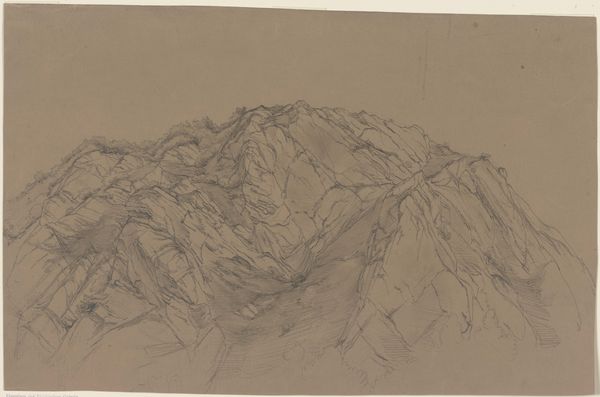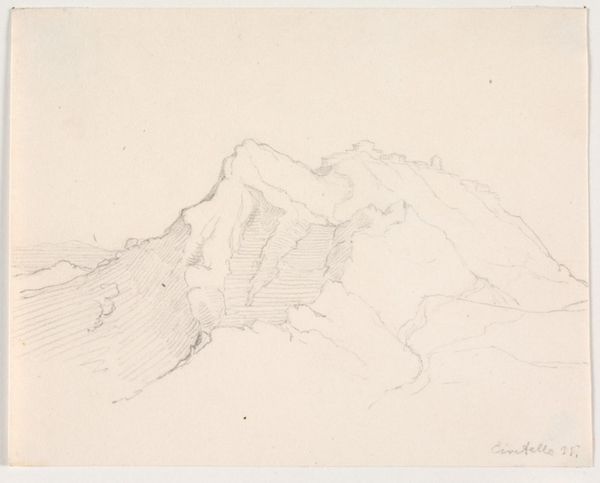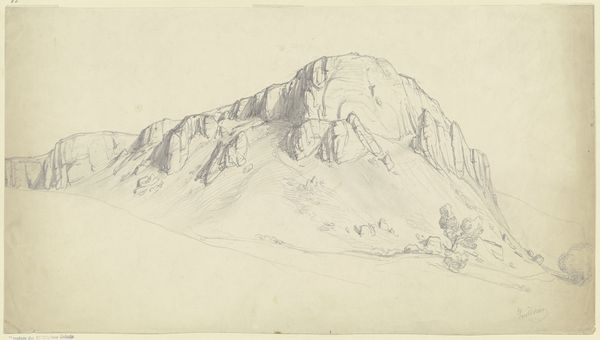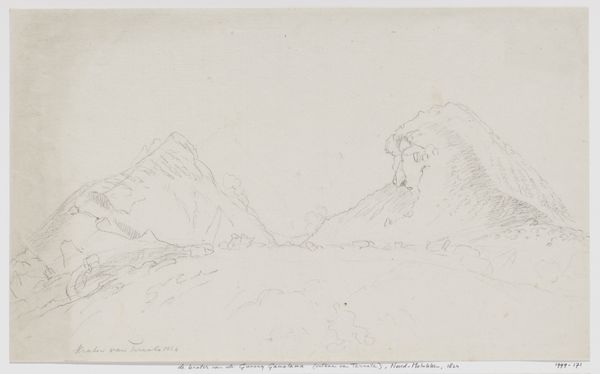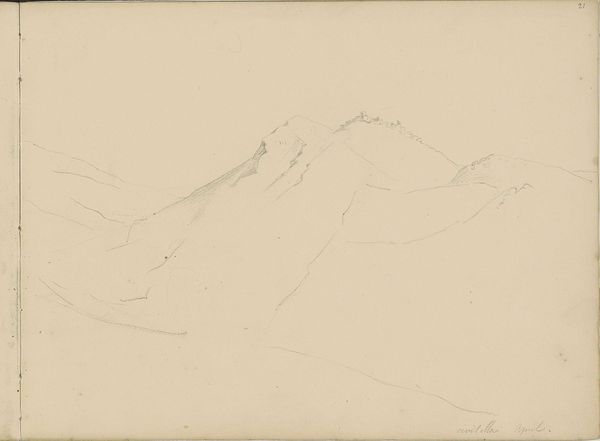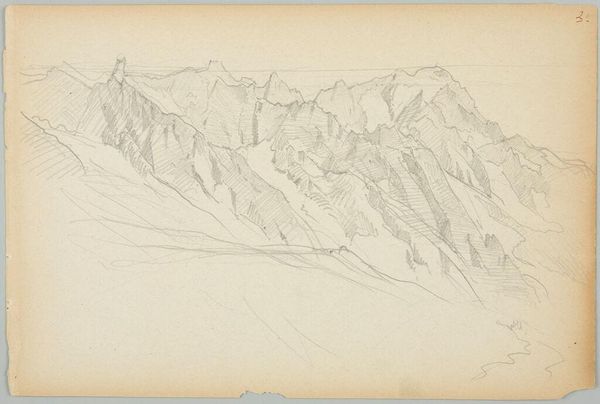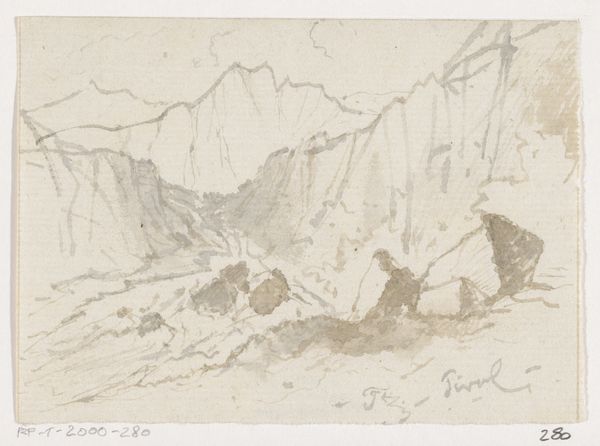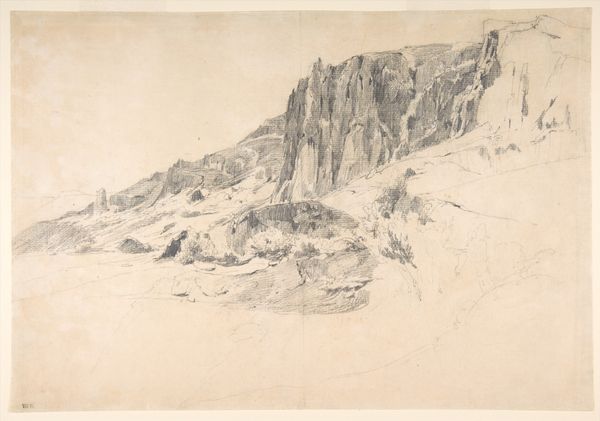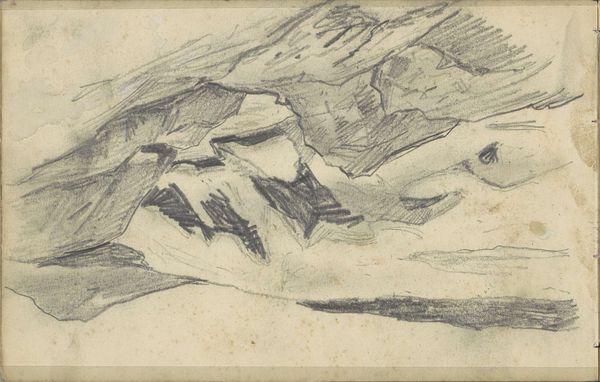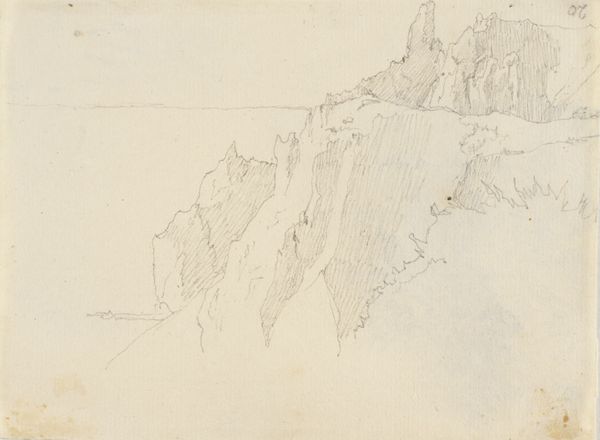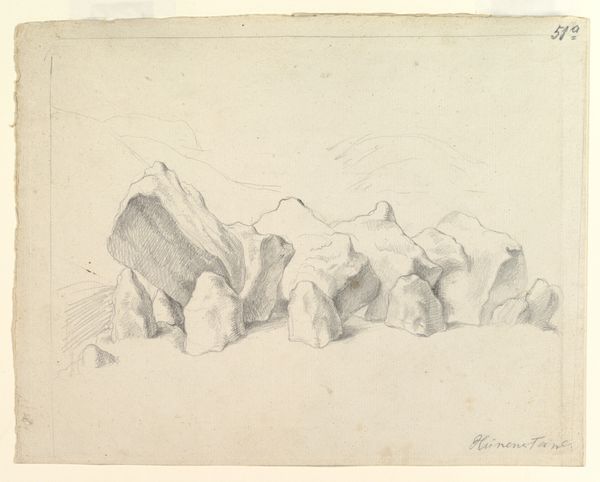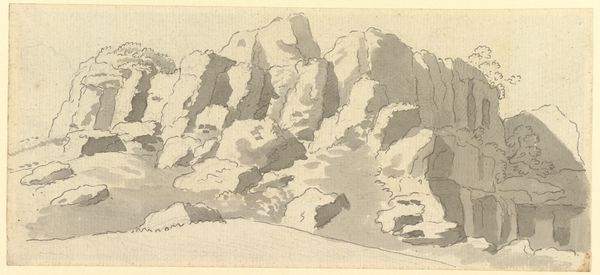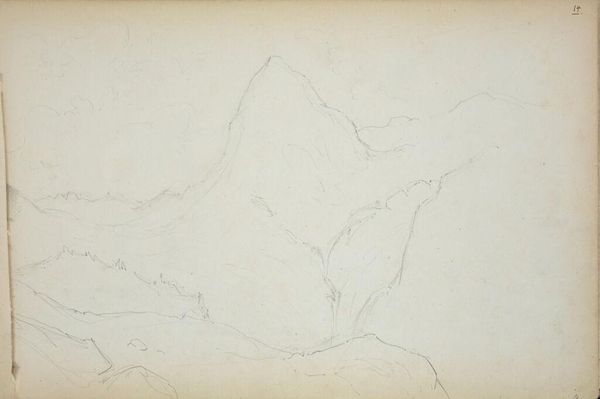
drawing, dry-media, graphite
#
drawing
#
landscape
#
etching
#
form
#
dry-media
#
graphite
#
realism
Copyright: Public Domain
Curator: We're looking at a work titled "Study of Rocks", a drawing rendered in graphite. It's part of the Städel Museum's collection. Editor: Right away, it feels unfinished, like a fleeting observation. Those light strokes, the stark paper – there’s a vulnerable quality to its simplicity. I almost hear the scratching of graphite. Curator: The artist seems very interested in the intrinsic qualities of forms; how the lines and facets of the rock give it a visual weight and symbolic importance that mirrors the actual importance of geographical forms. Editor: The geological "memory" locked within those rocks is powerful. It’s almost like the artist captured more than just their surface—they’ve hinted at eons. There’s a stoicism embedded here too. Curator: Absolutely, mountains are symbols of endurance in folklore. It seems also the artist sought an emotional response, a deep contemplation on nature's majesty, but rendered through simple graphite marks and raw composition. Editor: Makes me think about our impulse to document the seemingly monumental. It almost humanizes the unyielding – turning stone into something soft, fleeting like a thought. Curator: A "humanized" form certainly speaks of an allegorical continuity. Through the artist's rendition, it gains meaning for subsequent viewers, accumulating an aura as we interpret these mountains as archetypes of something beyond our everyday experience. Editor: I can definitely see that—art transforms, memory shapes… These "rocks" might now represent much more: resilience, history, maybe even us. I love when something so elemental spurs on such rich reflection! Curator: Well, it goes to show that, even in its unfinished nature, such studies bear emotional importance and insight, don't they? They capture not just rocks, but a certain enduring human experience.
Comments
No comments
Be the first to comment and join the conversation on the ultimate creative platform.
